Rookie Report Cards: The Most Noteworthy Summer League Showings
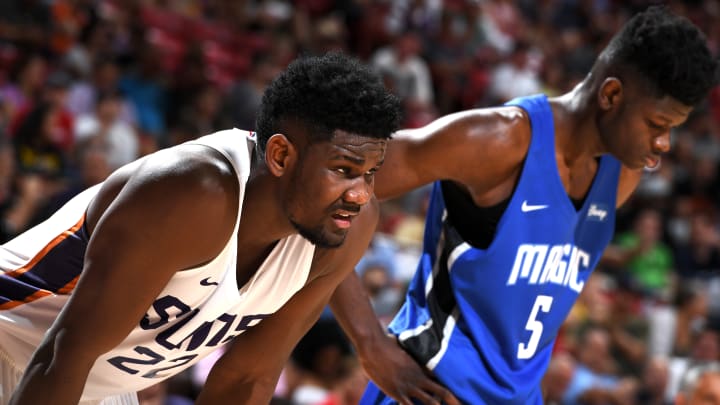
LAS VEGAS — With the disclaimer being that this is Summer League, early returns on the 2018 draft have been promising on the whole, with every team now having played three games in Vegas. The change in environment and upgrade in competition present an opportunity to re-evaluate prospects and get a feel for their overall readiness at the NBA level, as well as how their teams intend to use them. There’s not a ton of structure to the play, but seeing how players improvise and learn to play together with limited amounts of time to prepare can be telling.
Fit For The King: LeBron James and the Lakers Form Hollywood's Ultimate Marriage
A handful of players sat out entirely, including Luka Doncic, whom the Mavs opted to rest after finalizing his buyout with Real Madrid and getting his rookie contract signed. His presence would likely have been the story of Summer League, but instead we’ll have to wait. Michael Porter Jr. also sat out, as expected, and the Nuggets won’t rush him into action. Kevin Huerter (Hawks) and Donte DiVincenzo (Bucks) sat out nursing injuries, and first-rounders Landry Shamet (Sixers) and Robert Williams (Celtics) picked up knocks and didn’t get much court time as a result. All in all, the rookie talent fared well, and helped validate high hopes for this draft class.
The Crossover’s Front Office evaluated all 30 Summer League teams on-site in Vegas over the past week. Below, in order of selection in the draft, are the players who turned in the most noteworthy showings.
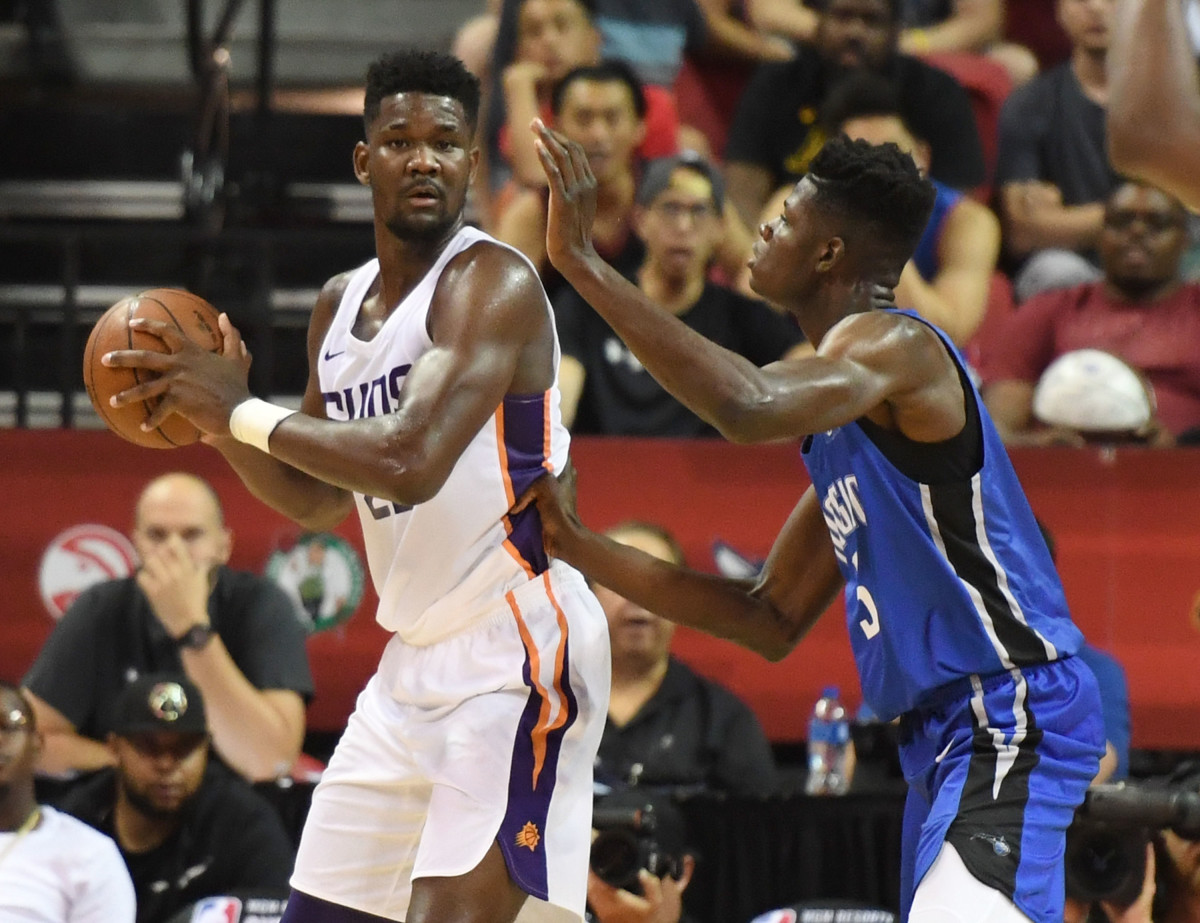
Deandre Ayton, Suns
Vegas didn’t produce a transcendent showing from the No. 1 pick, but Ayton had good moments as he began his adjustment to life as a professional. He improved as the week went on and wound up posting a pair of double doubles, but also had quiet stretches in each game, exacerbated by team-wide struggles to get him the ball where he could do damage. Summer League can be a difficult environment for bigs to produce in general, given the mishmash nature of rosters that skew young. To his credit, Ayton competed throughout and frequently made small, energy-based plays around the basket, looking to catch lobs, rolling to the basket and taking advantage of his own physicality.
One key to Ayton’s ongoing success will be consistently profiting off the easy opportunities his unusual strength and athletic coordination afford him. He can make catching lobs, crashing the glass hard and ducking in for simple finishes all look extremely easy. If Ayton does those things consistently (and there shouldn’t be much stopping him), it creates a solid floor for his production regardless of how many times the Suns are throwing him the ball. The next step is refining his post game and defensive positioning, while Phoenix figures out the optimal way to win through him. There’s time for all that to happen.
Marvin Bagley III, Kings
A pelvic bone bruise limited Bagley to just one game in Vegas, but his showing (in a head-to-head matchup with Ayton) coupled with a bit of iffy play in the Sacramento Summer League (31% from the floor in three games) suggests some early cause for concern. As billed, he’s a plus athlete, adept at rebounding and creating easy buckets. Bagley had a few nice, surprising flashes as a passer and shot-blocker, two areas that at this stage are not considered his strengths, and he’s a solid player in transition, something Duke didn’t do a whole lot of in general during his season there.
One Big Question Must Be Answered Before the NBA Can Correct Its Competitive Balance Issue
There’s no doubt about Bagley’s talent, but many scouts I spoke with expressed uncertainty as to where exactly his offense is going to come from, beyond the offensive glass and whatever teammates can create for him. His skill set as a scorer isn’t polished, as smart defenders have already picked up on his tendencies and begun to sit on him coming back to his left hand when operating inside. Bagley doesn’t yet have a post-up or face-up game worth leaning on, nor is his jumper in a reliable place. It’s apparent now that the Kings have to focus on the expansion of his skill set. If Bagley’s unable to become a passable stretch-four over the next couple years, it’ll be harder to deliver on his draft slot. If nothing else, this week suggests he may not be quite as safe a selection as many thought.
Jaren Jackson Jr., Grizzlies
There exists a school of thought among a few evaluators that Jackson had a legitimate case as the No. 1 pick in the draft, and at minimum, the Grizzlies made a terrific choice as he slipped to No. 4. It could be that his low point totals, foul struggles and occasionally spotty minutes at Michigan State helped obscure the fact that he was a prolific player for his age in many respects, particularly when it came to his block rate, and that his outlook is as bright as anyone in the draft at this point.
Turned loose by Memphis during games in Utah and Vegas, Jackson showcased himself as a legitimate set-shooting threat and a versatile, imposing defensive presence. His overall skill level and feel continue to improve, and while it may take a year or two for him to become a consistent scorer, there are a lot of positive things going on with his profile. Jackson’s development track is a bit longer than his peers, but everything he showed at Summer League points in the right direction.
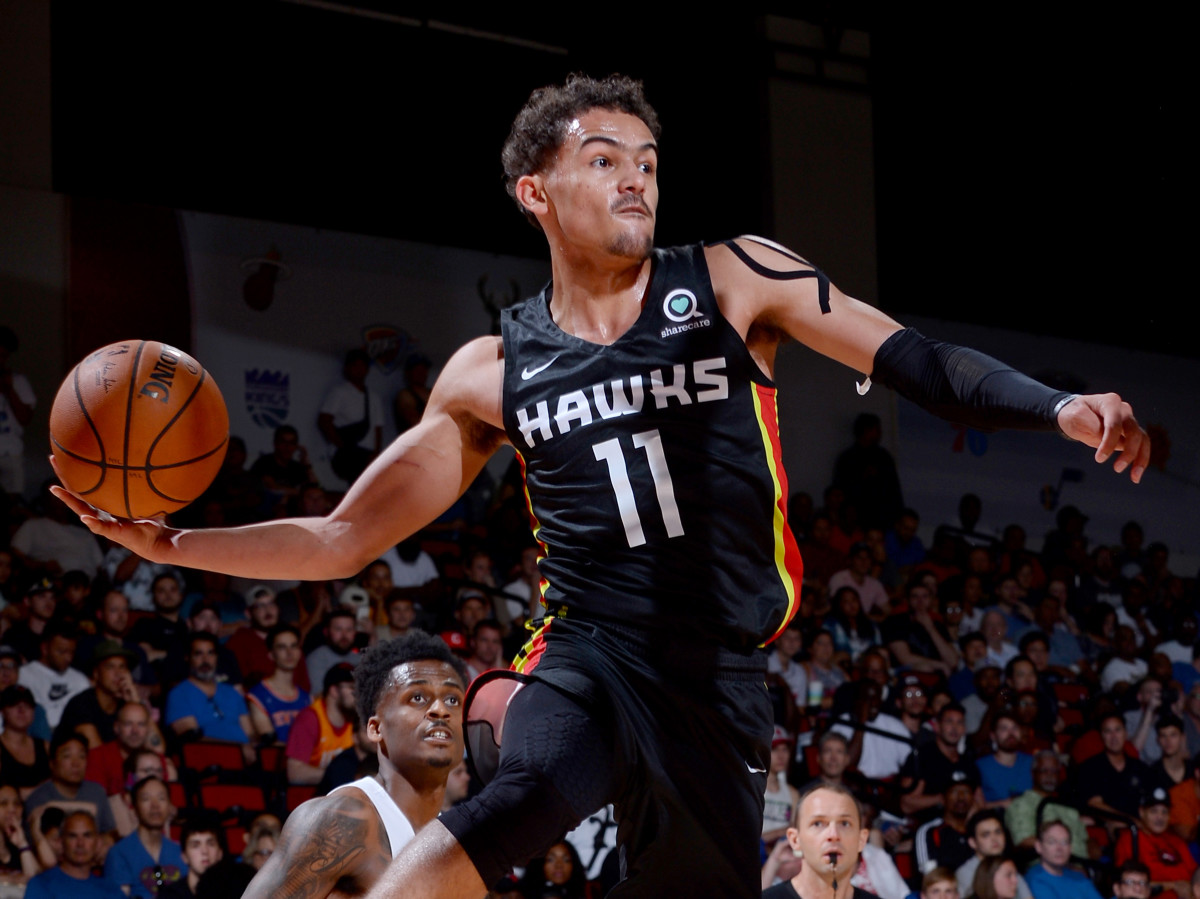
Trae Young, Hawks
After a poor shooting run in the Utah Summer League last week, Young picked up his play a bit in Vegas and was arguably the most gifted passer on display anywhere. With Young, his mixed efficiency and occasional turnover bouts are more a matter of situational recognition than any flaw in his game, and as he gains experience and adjusts to the level of competition, expect the quality of his play to keep improving and the mistakes to trend downward. Young is pacy off the dribble, hard to stay in front of, and almost too prolific a passer not to be successful to some degree. His size disadvantage might be the most glaring thing right now, but if he can stay healthy and get a little bit stronger it’ll help his case. Don’t expect him to be an overnight sensation as a rookie, but don’t overreact, either.
Mohamed Bamba, Magic
Bamba’s play has been as expected: He scored somewhat infrequently, had dazzling blocks and dunked easy lobs, and showed improvement as a spot-up shooter from three-point range. He got the better of a Sunday matchup with Jaren Jackson Jr. at times as well, coming up with key defensive plays and rolling hard to the rim. His upside remains substantial, but it should be clear at this point there’s going to be a long-term process with his individual development.
The Summer League Leap: Second-Year Players Making an Impact in Las Vegas
Bamba’s overall awareness has certainly improved, but he’s never been a player you can run offense through. His immediate contributions for the Magic on that end won’t be massive, and the focus should be acclimation and building physical strength. Increased consistency should follow. Orlando has already begun to see real returns on Jonathan Isaac, and Bamba will be afforded similar patience. The physical ability and flashes of brilliance are as advertised.
Wendell Carter, Bulls
You’ll be hard-pressed to find anyone around the league who feels particularly negative about Carter’s game, and he’s poised to deliver immediate value on his No. 7 selection. For all the discourse about the value of upside—which is ultimately why he wasn’t a top-five selection—Carter has so few weaknesses in his game at an early stage that it already seems foregone he’ll be in the NBA forever as long as he stays the course. He has an innate understanding of where to be and what to do at a given time, his jumper looks clean, and it all adds up to a highly versatile offensive presence that will make life easier for everyone else on the floor. He’s in terrific physical shape right now and notably looked more mobile defending guards on ball-screen switches. Expect him to be a useful rotation player for Chicago from the get-go and move into the starting lineup relatively early in his career.
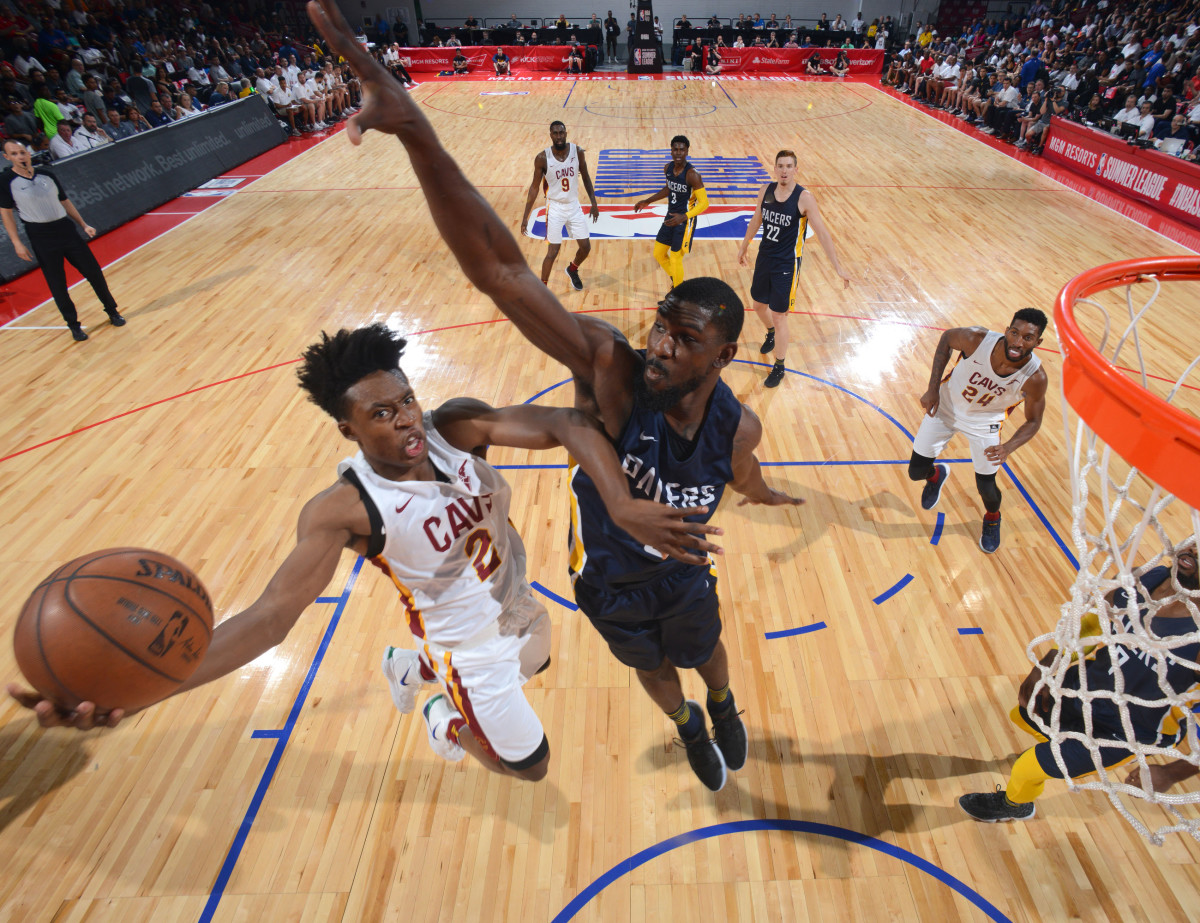
Collin Sexton, Cavaliers
It wasn’t a shock to see Sexton get his buckets and draw contact getting into the paint. It also wasn’t surprising to see some bad takes and misses from him. The concerning thing about his first three games in Vegas was he totaled just six assists (including one game with zero), as opposed to seven turnovers (a relatively small number, but still poor within context). When Sexton’s streaky three-point shot isn’t falling, he has trouble making a positive impact on the game at this stage. His nature is to score, and it does beg the question of whether he’s best suited to play shooting guard, something the Cavs could experiment with while pairing him with George Hill in the backcourt. Cleveland will hope he can grow into a player that can facilitate more offense, but given his long-held tendencies, it’s likely Sexton will always have a quick trigger. We’ll see if it can lead to winning.
Kevin Knox, Knicks
Knox was deservedly one of the buzzier names in the gym and on social media this week, as he could better showcase his athleticism and off-the-bounce game in this setting. For a younger prospect who will take some time to fully mature, he looked more than ready for this level, turning in active performances, running the floor and finishing above the rim. Without getting too hyperbolic, it’s clear he’s much more of a natural scorer than some expected.
NBA Free Agency Needs to Return to Normal in 2019
At Kentucky, Knox spent time confined into a spot-up role on the wing, which wound up being a positive thing for his growth and confidence. He’s become a more comfortable shooter from distance and has gained a better sense of how to attack defenses off the dribble over the course of the past year. Knox’s physical advantage in size and explosiveness is more pronounced than it appeared at times in college, and the Knicks should feel good about their decision at No. 9. He could become a quality running mate for Kristaps Porzingis on a team in need of perimeter scoring.
Shai Gilgeous-Alexander, Clippers
Gilgeous-Alexander’s steady evolution into a high-level playmaker has quietly been a fascinating storyline over the last nine months. After a few showings at Summer League, his overall potential as a player has never been more evident. The Clippers essentially turned over the keys to him this week and let him show off his creativity (even more so than at the end of Kentucky’s season), and the results were encouraging. He’s uniquely deceptive and quick working off the dribble, has terrific size, and showed encouraging improvements to his pull-up game. His length and instincts play nicely as a man-to-man defender. It’s Summer League, but Gilgeous-Alexander’s talent is apparent, and he has a real chance to be the best point guard in this draft class when it’s all said and done.
Troy Brown, Wizards
The role fit between Brown and the Wizards looks extremely positive at this point, and as Washington granted him additional ball-handling responsibilities, his game began to make much more sense than it did at Oregon. He was a bit miscast flanking two ball-dominant guards last season (Payton Pritchard and Elijah Brown), and his size and athletic edge popped much more pushing the ball in space and helping rebound in this environment. Brown also looks like an improved three-point shooter. Utility-type wings in his mold are valuable currency, and he turns 19 at the end of this month. He should be able to help the Wizards in due time.
Zhaire Smith, 76ers
Smith was one of the more exciting players to watch at Summer League from a highlight perspective, and as one of the better athletes and rawer talents in the draft, he’s progressing nicely. His long wingspan, quick leaping ability, open-court speed and knack for making defensive plays are all eye-catching. Though not an overly skilled scorer, Smith has enough awareness of where to be on the court that he won’t get in anyone else’s way. Playing off Ben Simmons is ideal for him, as he can defend opposing point guards, run the floor and allow other teammates to create offensive looks. If he pans out, he’ll be a great low-maintenance role guy for the Sixers.
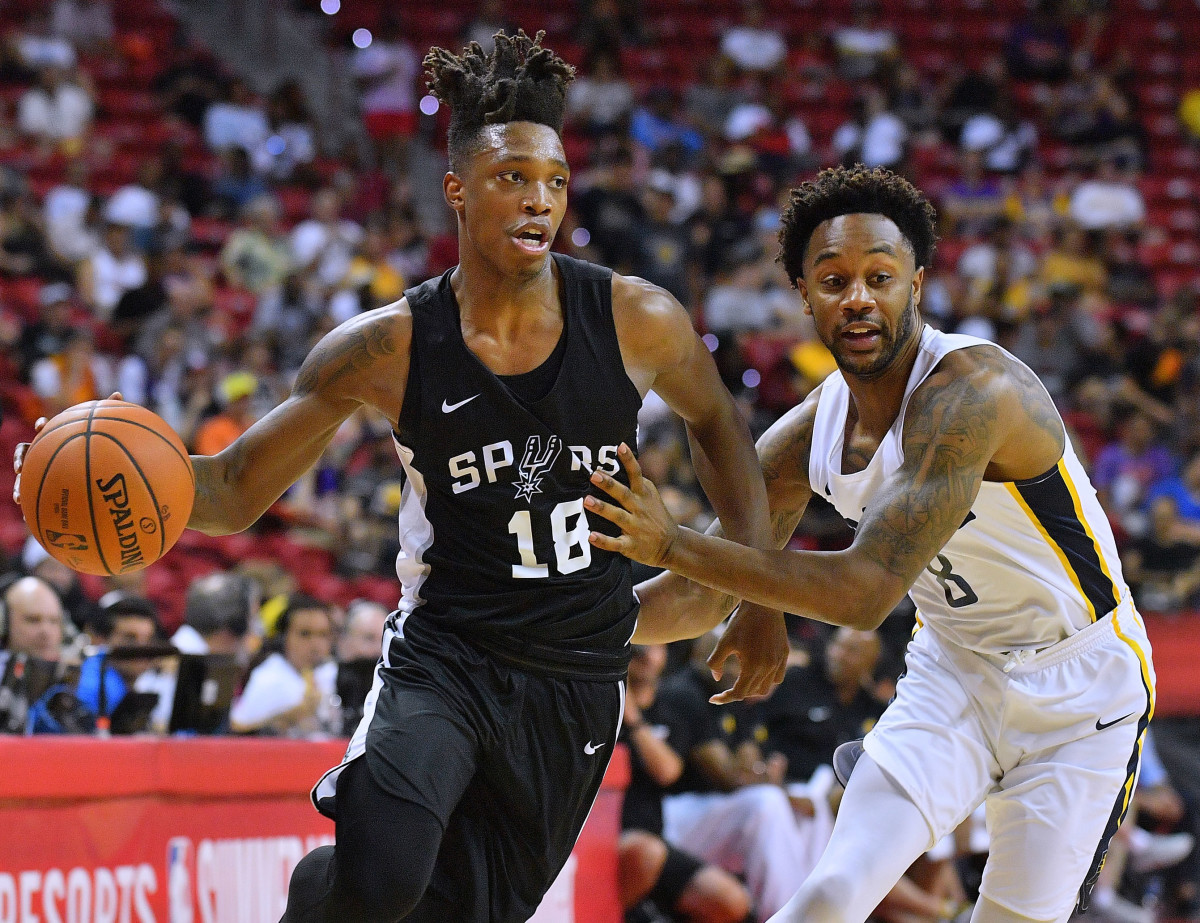
Lonnie Walker, Spurs
There are some legitimate durability concerns surrounding Walker, but if he’s able to put everything together, he could produce big value for where San Antonio drafted him. He was dynamic at times in Summer League and has readily apparent athletic potential attacking the rim and working in isolation. Walker’s defensive effort was also much more consistent. He’ll need a bit of time to adjust to the speed of the NBA game, but the arrow is trending in the right direction and he’s in a perfect situation with the Spurs, who should be able to flesh out his skill set and find a long-term role for him.
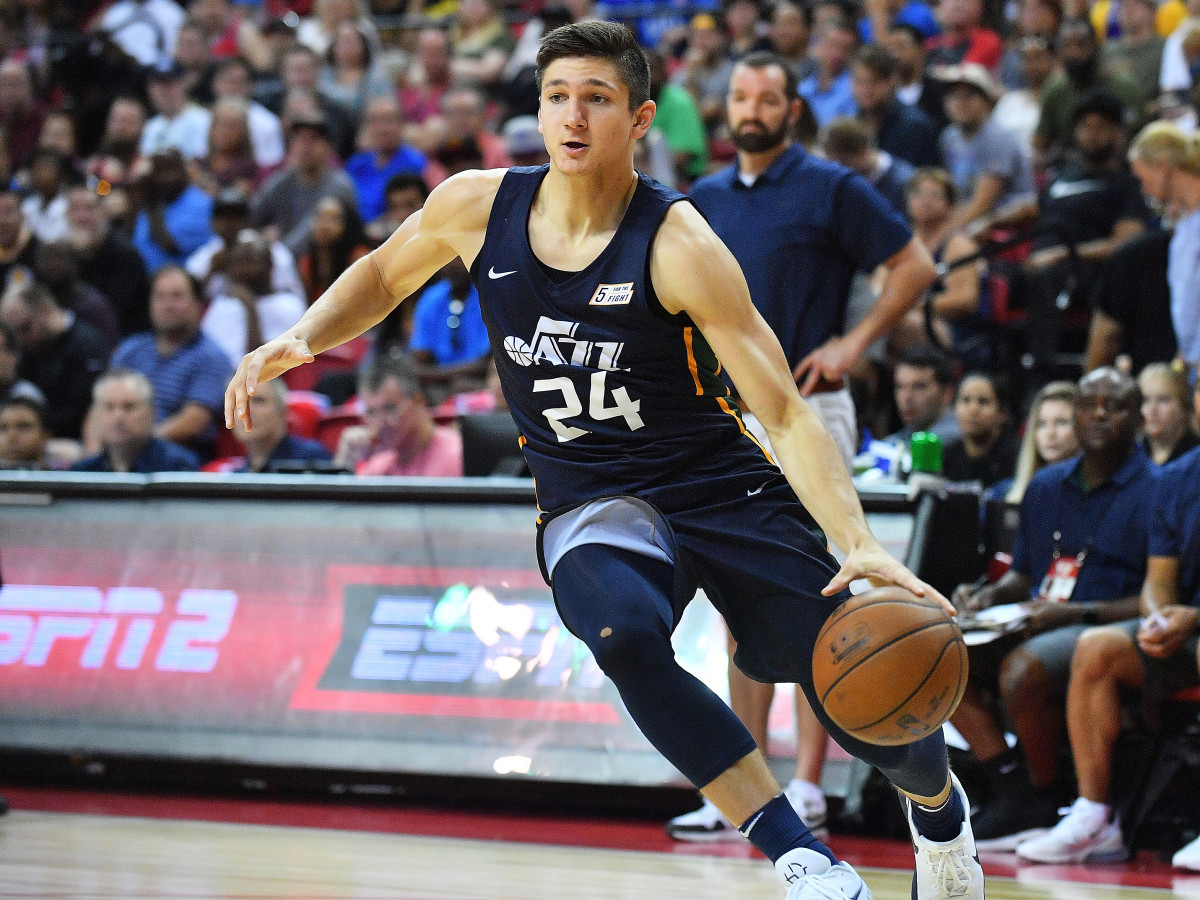
Grayson Allen, Jazz
As he should after four high-stakes seasons at Duke, Allen looked like a seasoned veteran in this setting and was able to display auxiliary skills that were somewhat hidden in college. Though not a true point guard, he does have a solid feel as a passer and will likely be tasked with helping set up Donovan Mitchell when they’re inevitably paired together. To nobody’s surprise, Allen has already been in some physical scuffles, but he’s good enough that everyone is going to have to live with that type of stuff, for better or worse. His shot-making, toughness and athleticism should help him contribute to the Jazz this season.
Aaron Holiday, Pacers
Holiday was clearly one of the most impressive rookies in Vegas, playing with nice poise, exhibiting vocal leadership with teammates, and looking a bit more shifty and athletic than he did at UCLA. He knocked down pull-up threes and got into the paint at a solid rate, occasionally forcing passes but playing with composure and exerting control over the floor at all times. The Pacers are going to love having him around, and he should be able to operate in a backup role pretty quickly. He’s already set himself apart from some of the other point guards.
Anfernee Simons, Trail Blazers
The leap from prep school to Summer League is not an easy one, and many were curious to see how well Simons would acclimate against the best competition he’s seen in his life. The results were encouraging. While it’s obvious he has a lot of literal growth to do refining his body and simply maturing, he was far from lost from a mental standpoint and was impressive fighting on the ball defensively.
Brett Brown: Markelle Fultz 'Is Going to Have a Hell of a Year'
Simons was one of the more athletic guards in the draft, and the skill level should come along to where he can eventually contribute to a team. It was still a curious pick for Portland, given it doesn’t have its own G League affiliate, but ideally he’ll spend this season on a favorable flex assignment. He’s no lock to reach his potential, but consider Summer League a positive start.
Mitchell Robinson, Knicks
Like Simons, Robinson was another guy facing a steep level adjustment after skipping out on his freshman season at Western Kentucky. He passed the test with flying colors, and his extreme athletic gifts make him an imposing shot-blocking presence and aerial threat. The question with him was never talent, and it’s still up in the air as to whether he’ll realize his full potential on the court. The Knicks guaranteed the first two years of his four-year contract after taking the plunge at No. 36, a low-risk investment in what could be a useful player. That said he might be more likely to help whichever team gives him his second contract.

De’Anthony Melton, Rockets
Melton’s draft-night tumble to No. 46 looks like a huge win for the Rockets. After sitting out the year at USC due to FBI investigation fallout, there was ultimately not enough confidence from teams for him to sneak into the first round. He looked a bit lost in his first game in Vegas, but quickly settled in, showing off the defensive intensity and open-court playmaking that should turn him into a useful role player. Melton’s three-point shot is inconsistent but improving. He’s unlikely to help Houston right away, but putting him in the pipeline as a potential bench guy to flank James Harden was a smart decision.
Svi Mykhailiuk, Lakers
Mykhailiuk has been better than expected in this setting, knocking down threes as usual but also showcasing a level of athleticism and decision-making prowess that wasn’t always obvious at Kansas. He has a pretty, consistent stroke that allows him to play as a specialist. It’s entirely possible he ends up overmatched when facing better competition, and smart teams will pick on him defensively and take advantage. But as a cheap potential role guy to place around LeBron, Mykhailiuk may have more of a chance to stick than originally thought.
